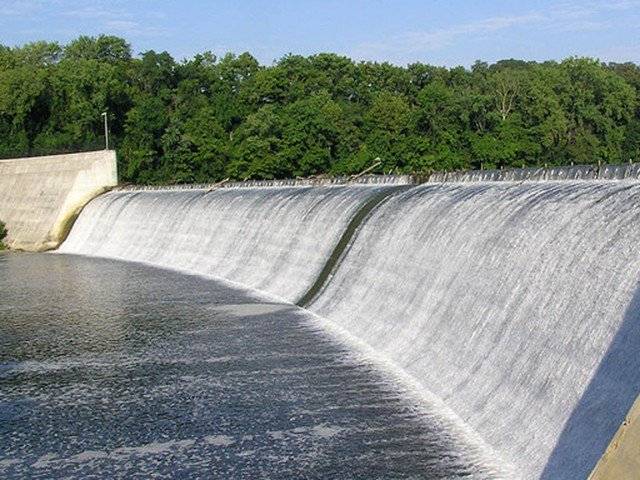A widely believed perception in regard to Kalabagh Dam (KBD) is that “WAPDA as an employer has influenced the findings of the international consultants.” This accusation, which not only challenges the credibility of experts and consultants but also of WAPDA is based on the opinion of those who are not qualified to sit in judgment.
Taming rivers through building dams and creating water storages is a very specialized engineering field and requires a certain skill set. Expertise developed in other branches of civil engineering, i.e., construction of tall buildings, roads, bridges and other infrastructure projects has little relevance with such hydel projects.
Engineering study of a proposed dam requires study of river flow data at different locations and seasonal variations in the flows. At the storage site, it requires study of bedrock structure, percolation characteristics of sub-soil, soil strength, silting and de-silting pattern. Such studies and data collection is a painstaking effort spread over many years.
The engineers after acquiring post graduate qualification and accumulating few decades of experience are appointed as consultants. In case of KBD, following table shows the history of involvement of Engineering Consultants particularly foreign firms who have carried out studies on various aspects of KBD along with numbers of foreign engineers involved in it:
Kalabagh Dam Project Studies / Reports
Study / Report Agency Year
Preliminary Report Tipton &Hill 1953
Preliminary Feasibility Report Chas T. Main 1966
Study of Water & Power World Bank Study Group 1967
Resources of West Pakistan
Feasibility Report WAPDA/HARZA 1972
Revised Feasibility Report ACE Ltd; 1975
Review of Feasibility Report Board of Consultants 1975
Appraisal Report World Bank 1980
Project Planning Report Kalabagh Consultants 1984
Detailed Designs Kalabagh Consultants 1985
Design Refinements and Kalabagh Consultants 1988
Tender Documents
As local engineers may not have the necessary qualifications and experience for mega projects, consultants are engaged through international competitive bidding. Utmost carefulness is practiced by such experts of international repute who carry out feasibility and detailed engineering studies, so as to leave no margin of error. The stakes are very high, therefore no expert takes chances with the design or accepts a risky option. Imagine if a dam, God forbids has an untoward incident and the impounded water break out, millions of acres of lands in most areas would be submerged under many feet of water paralyzing the whole nation.
The consulting firms that are employed for such projects are extremely conscious of their reputation and would not approve or recommend any action which may raise question marks on their repute, professional competence and integrity. Moreover, they do not have direct financial stakes in the execution as Project Designers are different from the companies carrying out the implementation of the works.
In Pakistan, as the Kalabagh dam project became politicized, the engineers employed by provincial irrigation departments whose experience and knowledge was not directly related with building dams were used to question the technical details of the project. However, very cleverly it is not contested as an engineering or technical issue rather it is presented as a political issue in which WAPDA, an organization under the control of Federal Government, is arrayed against a province. Therefore, the criticism was only directed against WAPDA. In the debate, the professional competence of experts who prepared engineering studies is conveniently not mentioned. Ironically the dissenting observations and findings were made by those engineers who all their lives had worked in only Irrigation, Buildings or Highways Departments. In no case did they had the necessary skill set to question or challenge the findings of those whose qualification, experience, credentials and reputation for designing a mega hydel project was known internationally.
If and when, an attempt is made to clarify that WAPDA only hires the services of experts who are neutral, they question the integrity of reputed consultants by alleging that WAPDA as an employer forced the consultants to present a project as feasible whereas it is technically not practical. Nothing can be further from the truth. World renowned engineers have a reputation to protect and cannot be influenced to deliberately make a wrong decision. Regarding their conduct, only one example should settle this issue. It is wrongly believed that WAPDA wants to divert water from the Indus through off taking canals from the Kalabagh Dam site. If this was true and the Consultants engaged to design the project could be manipulated, their findings would have been different. The KBD Consultants after detailed study opposed construction of left and right bank canals on account of technical reasons besides economic viability. Similarly if there was any danger to lands situated in Peshawar valley or had there been real threat of flooding to Nowshera, how could WAPDA manipulate their findings? Also, why would anyone even think of doing it? The fact is that WAPDA neither would have wished nor had the clout to doctor the findings of the consultants. Then why do some people tend to believe that WAPDA may have influenced the consultants? The problem lies in judging the world renowned professional Consultants through the same prism, which we use to assess the professional integrity of engineersworking in provincial setup of Pakistan.
Dear readers, the way to step out of this quagmire may rest in a different approach. WAPDA can alley the apprehensions of detractors by requesting the concerned provincial governments to appoint neutral experts of their choice who could audit these studies and verify the findings. I am sure if such offer is accepted, WAPDA with approval of the Federal Government would happily fund the costs of the services of such neutral experts.






